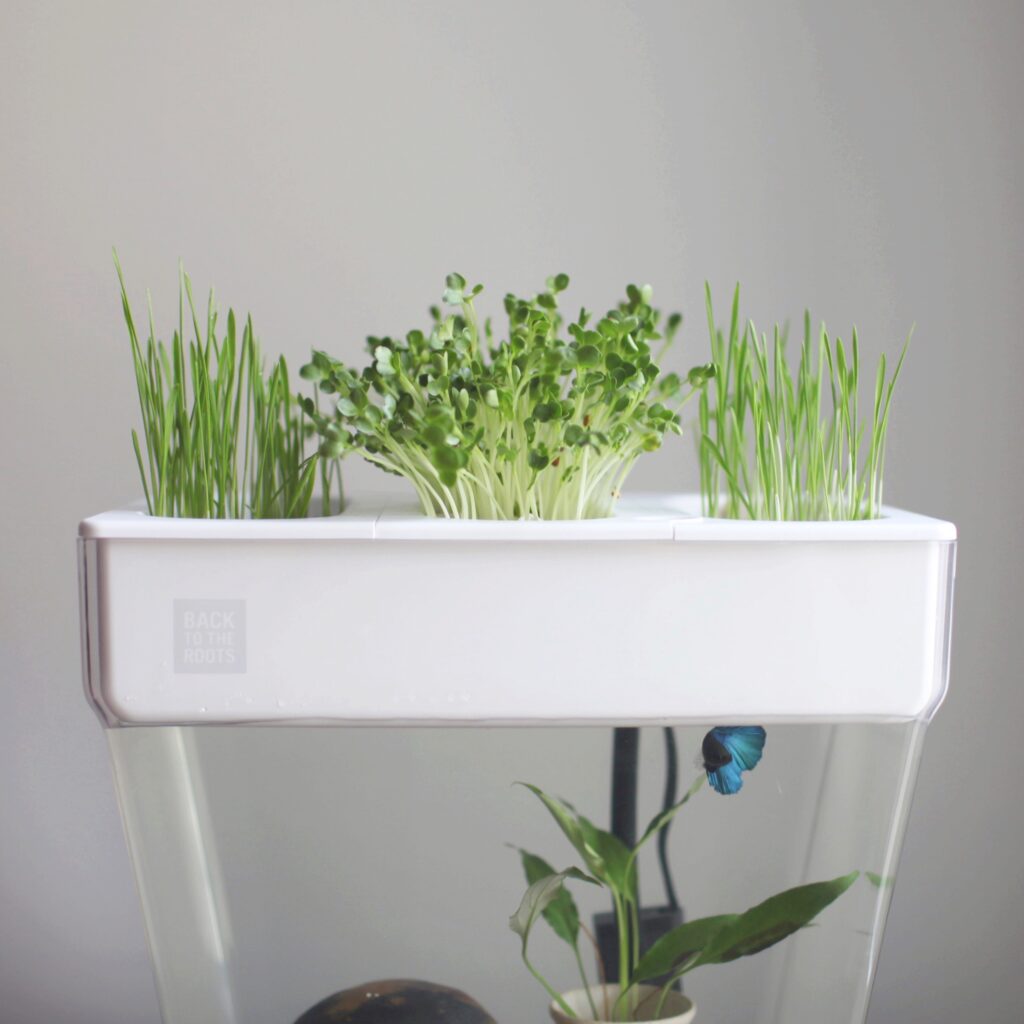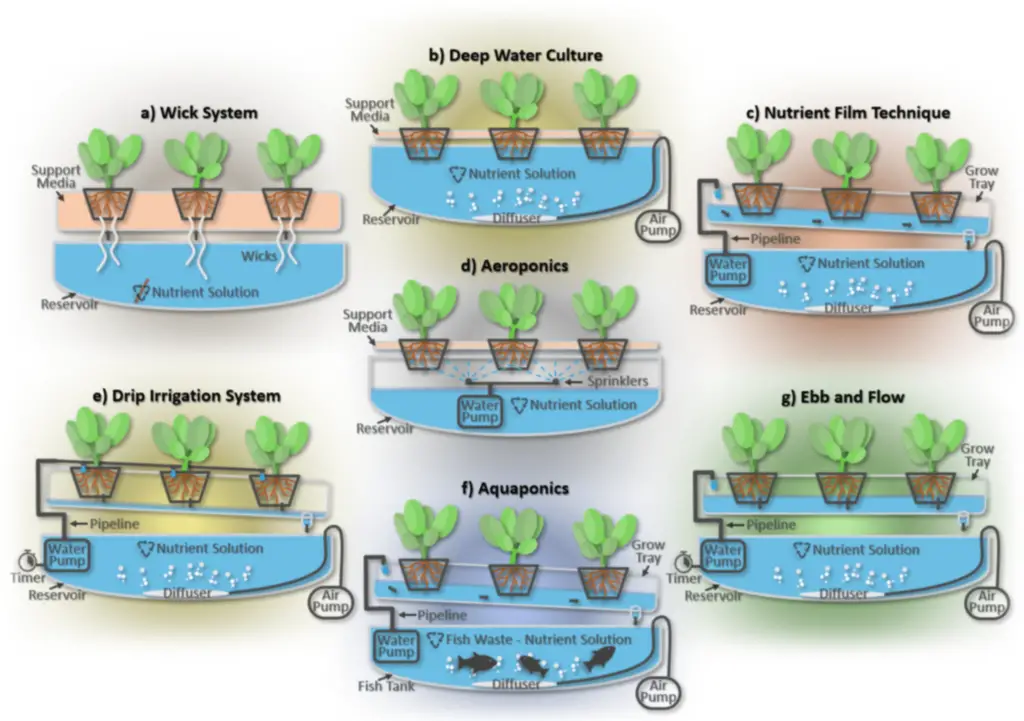Welcome to an exciting glimpse into the future of food production! In this article, we will explore the innovative techniques of hydroponics and aquaponics that are revolutionizing the way preppers are growing their own fresh and sustainable food. Get ready to discover how these cutting-edge methods are offering a solution to food insecurity and providing a more self-sufficient approach to your food supply. Let’s dive in and explore the endless possibilities of hydroponics and aquaponics for preppers. Have you ever wondered about the sustainability of our current food system, especially in times of crisis or uncertainty? As a prepper, you understand the importance of being prepared for any situation, including food shortages. One innovative solution that is gaining traction in the prepping community is hydroponics and aquaponics. In this article, we will explore the future of food through these cutting-edge technologies and how you can incorporate them into your prepping strategy.

The Basics of Hydroponics
Hydroponics is a method of growing plants without soil, using nutrient-rich water to deliver essential nutrients directly to the plant roots. This allows for more efficient nutrient absorption and faster growth rates compared to traditional soil-based gardening.
If you’re new to hydroponics, don’t worry – it may sound complex, but it’s actually quite simple once you get the hang of it. One of the great things about hydroponics is that it can be done on a small scale, making it perfect for preppers looking to grow their own food in a limited space.
Setting up a Hydroponic System
Setting up a hydroponic system doesn’t have to be overwhelming. There are many different types of hydroponic systems to choose from, ranging from DIY setups made from materials you may already have at home to more advanced systems that automate the growing process.
One popular DIY option is the Kratky method, which involves growing plants in a nutrient solution without the need for a pump or electricity. This low-cost system is great for beginners and can be easily scaled up as needed.
Choosing the Right Plants
Not all plants thrive in a hydroponic environment, so it’s important to choose the right crops for your system. Leafy greens like lettuce, spinach, and kale are popular choices for hydroponic gardening, as they grow well in nutrient-rich water and have shallow root systems.
Herbs like basil, cilantro, and mint also do well in hydroponic systems, providing fresh flavors for your meals without needing to step foot in a grocery store. Experiment with different plants to see what grows best in your setup and climate.
The Benefits of Hydroponics for Preppers
Hydroponics offers several key benefits for preppers looking to secure a reliable food source in times of need.
Year-Round Growing
One of the biggest advantages of hydroponics is the ability to grow food year-round, regardless of the season or climate. With indoor hydroponic setups, you can control the growing environment to provide optimal conditions for your plants, ensuring a steady supply of fresh produce no matter the weather outside.
Space Efficiency
Hydroponic systems take up less space than traditional gardens, making them ideal for preppers with limited outdoor space. Vertical hydroponic setups are particularly space-efficient, allowing you to maximize your growing area without sacrificing crop yield.
Water Conservation
Hydroponic systems use significantly less water than soil-based gardening, making them a sustainable choice for preppers concerned about water scarcity. By recirculating and reusing nutrient solutions, hydroponics minimizes water waste and ensures that your plants receive the hydration they need to thrive.
Understanding Aquaponics
Aquaponics takes hydroponics a step further by combining plant cultivation with fish farming in a symbiotic ecosystem. In an aquaponic system, fish waste provides nutrients for plants, while the plants filter and purify the water for the fish. This closed-loop system creates a harmonious relationship between aquatic life and plant growth, resulting in a self-sustaining food production system.
How Aquaponics Works
In an aquaponic setup, fish are housed in a tank where they produce waste rich in ammonia, a byproduct of their metabolism. This nutrient-rich water is then pumped to the plant beds, where beneficial bacteria convert the ammonia into nitrates that plants can absorb as fertilizer. The plants take up these nutrients, purifying the water in the process, which is then recirculated back to the fish tank.
Choosing Fish and Plants
When planning an aquaponic system, it’s important to select fish and plants that are compatible with each other and can thrive in a shared environment. Tilapia, trout, and catfish are popular choices for aquaponic fish, as they are hardy species that produce ample waste for plant nutrition.
Leafy greens, herbs, and fruiting plants like tomatoes and peppers are commonly grown in aquaponic systems, benefiting from the nutrient-rich water provided by the fish. By selecting the right species for your setup, you can create a balanced ecosystem that supports both aquatic and plant life.
The Benefits of Aquaponics for Preppers
Aquaponics offers a range of advantages for preppers seeking a sustainable and resilient food production system.
Enhanced Nutrient Cycling
In an aquaponic system, nutrients are continuously recycled between fish and plants, creating a closed-loop cycle that minimizes waste and maximizes efficiency. This sustainable approach to agriculture reduces the need for external inputs like chemical fertilizers, making aquaponics a cost-effective and environmentally friendly choice for preppers.
Diversification of Food Sources
By integrating fish farming with plant cultivation, aquaponics allows preppers to diversify their food sources and increase self-sufficiency. With the ability to produce both protein-rich fish and nutrient-dense plants in a single system, aquaponics provides a well-rounded diet that can sustain you through challenging times.
Increased Resilience
The interconnected nature of aquaponic ecosystems enhances resilience by buffering against fluctuations in water quality and environmental conditions. By fostering a balanced relationship between fish and plants, aquaponics creates a stable and self-regulating environment that can adapt to unforeseen challenges, ensuring a reliable food source for preppers.

Advanced Technologies in Hydroponics and Aquaponics
As hydroponics and aquaponics continue to evolve, new technologies are emerging to enhance the efficiency and productivity of these growing systems.
Automated Monitoring Systems
Advanced monitoring systems equipped with sensors and controllers can help preppers optimize their hydroponic and aquaponic setups by tracking key parameters like pH, nutrient levels, and water temperature. These devices provide real-time data to help you make informed decisions about adjusting your system for optimal plant growth.
By integrating automated monitoring systems into your growing operations, you can minimize the risk of nutrient deficiencies or imbalances, ensuring that your plants receive the care they need to thrive.
LED Grow Lights
LED grow lights are a game-changer for indoor hydroponic and aquaponic setups, providing a full spectrum of light that mimics natural sunlight for optimal plant growth. These energy-efficient lights produce less heat than traditional lighting sources, reducing the risk of overheating in enclosed growing spaces and allowing for more precise control over light cycles.
By investing in LED grow lights, preppers can create a consistent and reliable light source for their plants, promoting healthy growth and maximizing crop yields.
Smart Aquaponic Systems
Smart aquaponic systems integrate automation and control technologies to streamline the management of fish and plant production. These systems can automatically adjust water flow rates, nutrient levels, and feeding schedules based on real-time data, optimizing the performance of the ecosystem and reducing the need for manual intervention.
By incorporating smart aquaponic systems into your prepping strategy, you can achieve greater efficiency and productivity in your food production, ensuring a sustainable and resilient food source for your survival needs.
Incorporating Hydroponics and Aquaponics into Your Prepping Strategy
Now that you understand the basics of hydroponics and aquaponics and the benefits they offer for preppers, it’s time to consider how you can incorporate these technologies into your prepping strategy.
Start Small
If you’re new to hydroponics and aquaponics, it’s best to start small and learn the ropes before scaling up your operation. Begin with a simple DIY hydroponic setup or a small aquaponic system to gain hands-on experience and familiarize yourself with the growing process.
By starting small, you can refine your techniques, troubleshoot any issues that arise, and gradually expand your setup as you become more comfortable with the technology.
Build a Resilient System
When designing your hydroponic or aquaponic system, prioritize resilience by incorporating redundancies and backups to ensure continuity of food production. Consider installing backup power sources, water filtration systems, and emergency supplies to mitigate the impact of potential disruptions to your setup.
By building a resilient system that can withstand unforeseen challenges, you can rest assured knowing that you have a reliable food source to sustain you in times of need.
Experiment and Adapt
As you embark on your hydroponic and aquaponic journey, don’t be afraid to experiment and adapt your growing practices to suit your unique needs and environment. Test different plant varieties, nutrient solutions, and system configurations to find what works best for you and your prepping goals.
By staying open to new ideas and willing to tweak your setup as needed, you can continuously improve your food production system and optimize your self-sufficiency for any scenario that may arise.

Conclusion
The future of food is changing, and as a prepper, it’s essential to stay ahead of the curve by exploring innovative solutions like hydroponics and aquaponics. By integrating these cutting-edge technologies into your prepping strategy, you can create a sustainable and resilient food production system that will support you through any challenge that comes your way.
Whether you’re looking to grow fresh vegetables in a small urban apartment or raise fish alongside your plants in a backyard greenhouse, hydroponics and aquaponics offer endless possibilities for preppers seeking self-sufficiency and food security. Take the first step towards a greener, more sustainable future by embracing the potential of hydroponics and aquaponics in your prepping journey. Happy growing!
